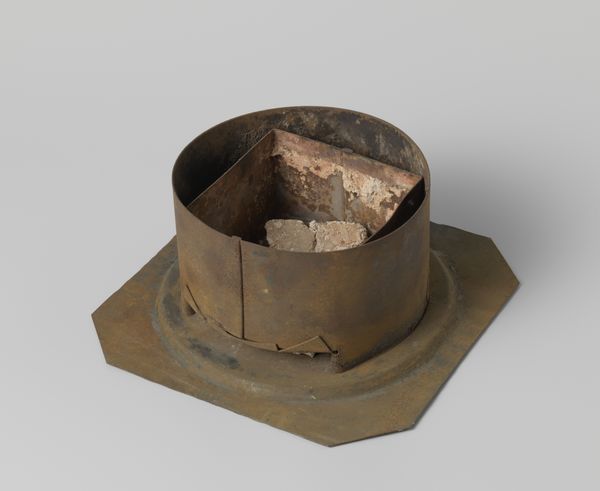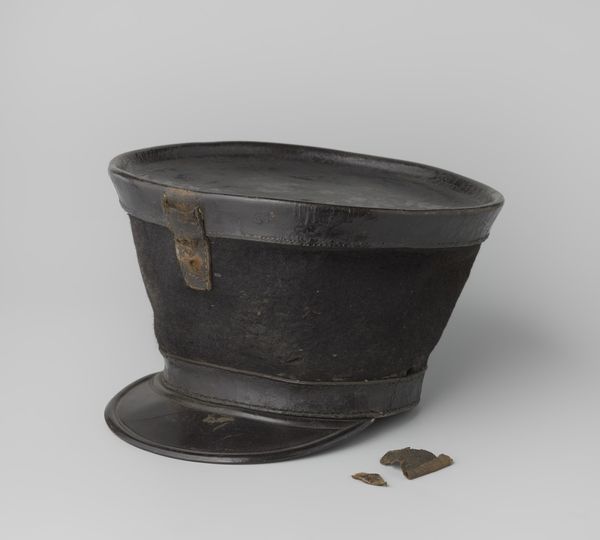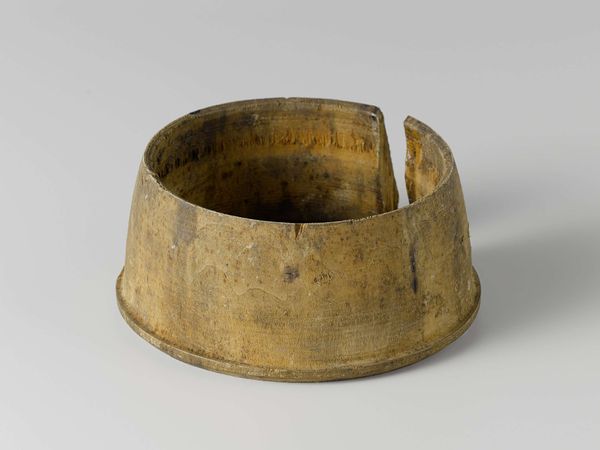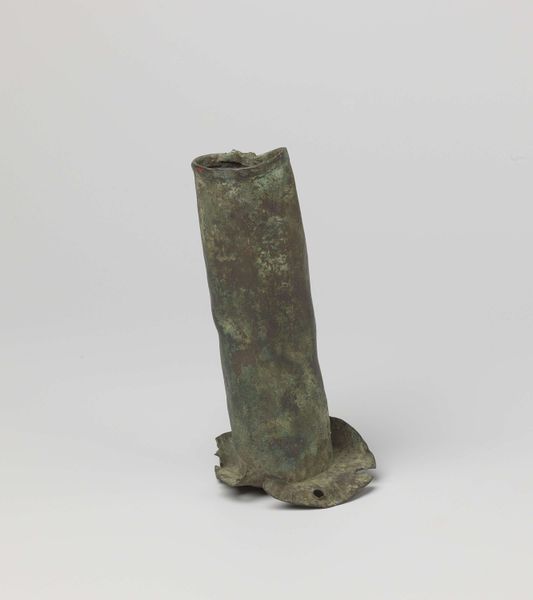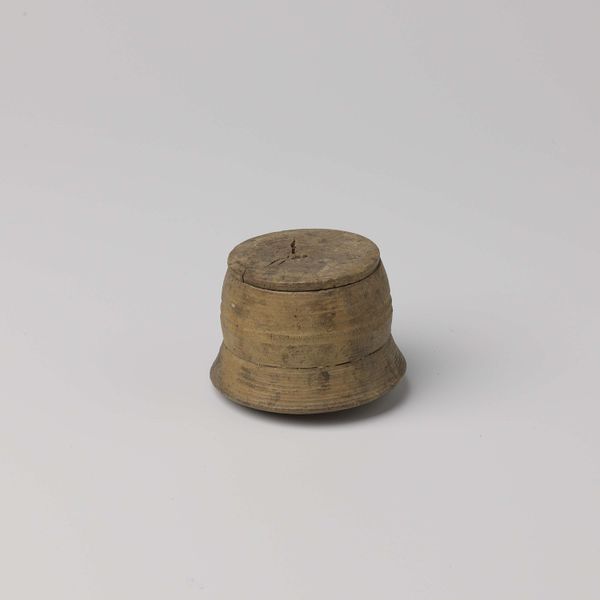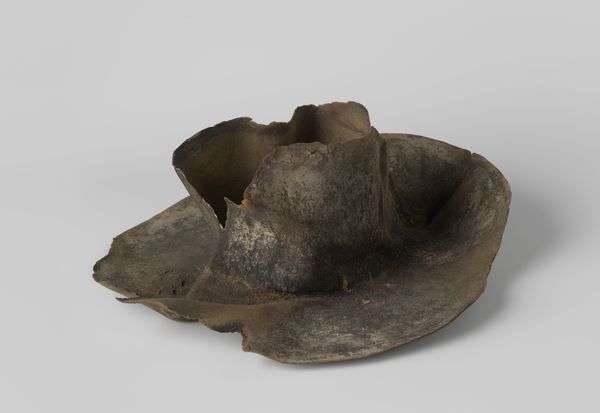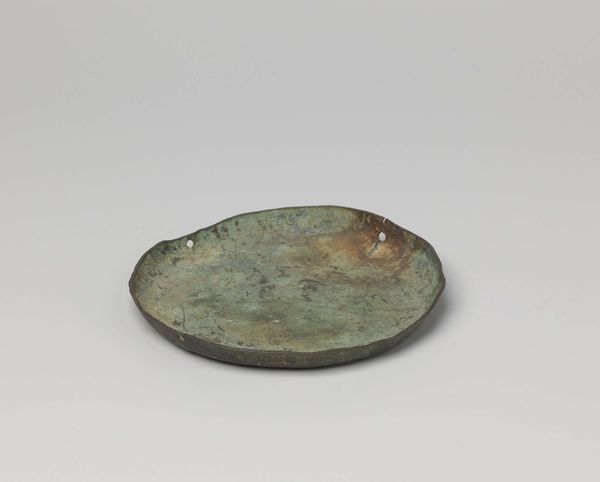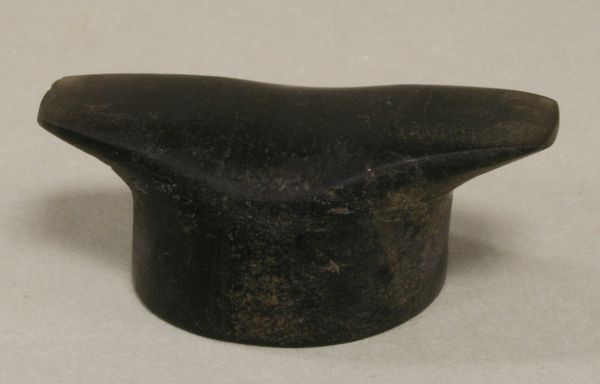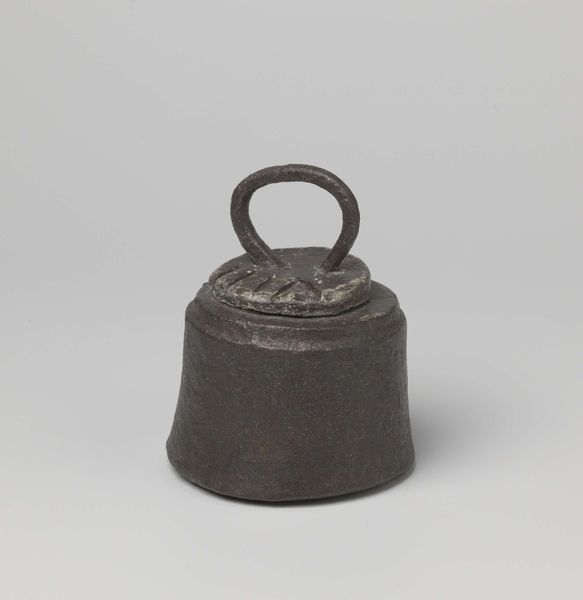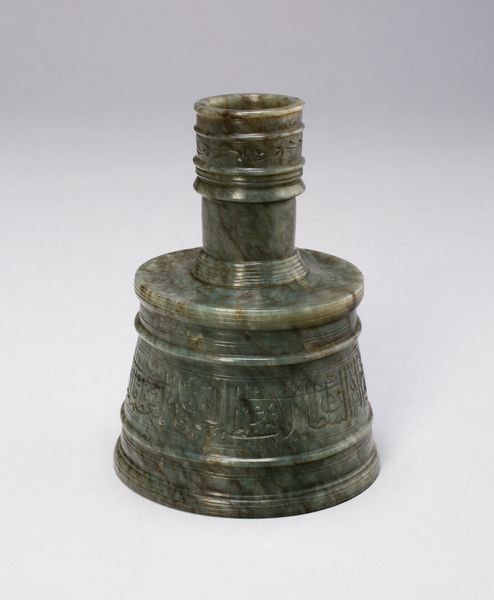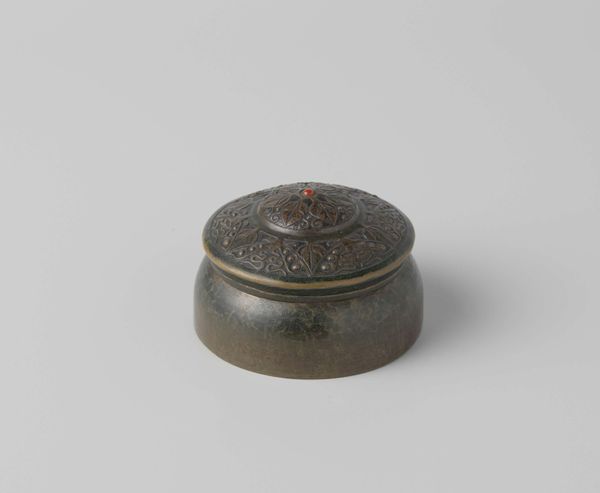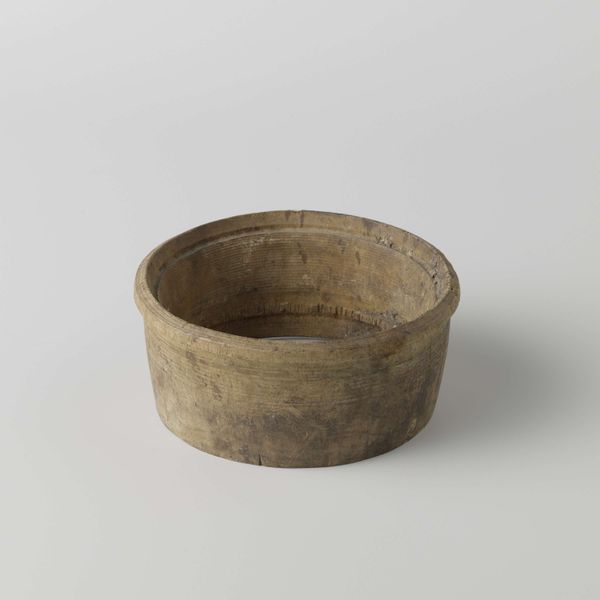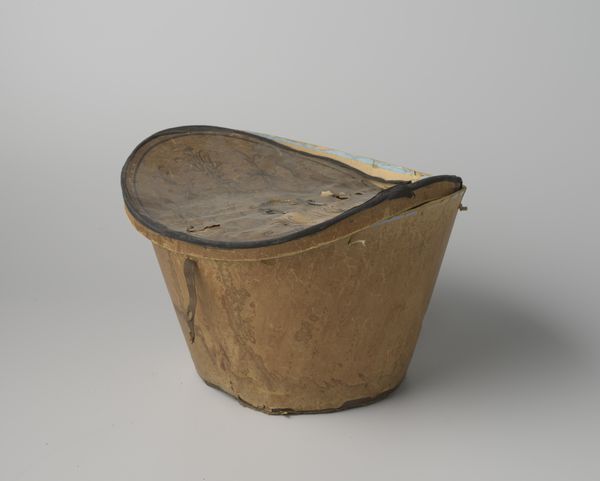
Bak bestaande uit een vierkante basis waarop een cirkelvormige opstaande wand is gesoldeerd c. 1590 - 1596
0:00
0:00
anonymous
Rijksmuseum
metal, sculpture
#
3d sculpting
#
3d model
#
3d printed part
#
rounded shape
#
metal
#
sculptural image
#
form
#
11_renaissance
#
3d shape
#
prop product design
#
sculpture
#
metallic object render
#
3d modeling
#
curved shape
Dimensions: height 3.3 cm, width 8.2 cm, diameter 7.2 cm
Copyright: Rijks Museum: Open Domain
Curator: This intriguing object is titled "Bak bestaande uit een vierkante basis waarop een cirkelvormige opstaande wand is gesoldeerd"—or, “Container consisting of a square base with a circular raised wall soldered onto it.” It’s an anonymous work dating from approximately 1590 to 1596 and it's currently held in the Rijksmuseum. Editor: Well, immediately, the brutal geometry strikes me. The severe square clashing against the yielding circle…there's a potent visual tension, a dialectic between stability and flow. And that texture! Curator: Indeed. Consider how the unseen artist chose to resolve that tension, Editor. Observe the assertive verticality of the cylinder, contained by its circular form which offsets and balances the rigid horizontality of the square base. The circle surmounts the square, a figure/ground relationship. A beautiful essay in form. Editor: Beautiful…but let's not divorce this from its making! That soldering isn't seamless; it’s rough, present. We're seeing evidence of handiwork, labor…someone, with tools, shaping raw material into function. What was the purpose of this piece? Holding dyes? Alchemical ingredients? Something quotidian? Curator: Its precise function remains speculative, however the ontological presence of the piece—its inherent 'being'—transcends mere utility. Consider its eroded surface—a testament to the passage of time, adding another layer to its complex formal vocabulary. It transcends its objecthood by this juxtaposition of form and patina. Editor: The patina is key! It tells the story of oxidation, of slow chemical reactions, a direct record of environmental conditions, handling, and probably mistreatment. We're talking about centuries of labor, use and eventual decay baked directly into the visual language here! Curator: True, but this decay contributes to its aesthetic value, its aura, enhancing its formal characteristics and contributing to the overall Gestalt. Editor: Gestalt aside, I can't help but consider what resources went into fabricating even this small object in the late 16th Century—where was the ore mined? How were these planes of metal shaped and joined? There is an almost brutal, unrefined quality which reminds us of its materiality above all. Curator: A potent reminder indeed, that a holistic aesthetic engagement must acknowledge all levels of experience to fully appreciate a given artwork. Editor: Absolutely. To really dig beneath the surface, we have to embrace material realities, origins and means of production.
Comments
No comments
Be the first to comment and join the conversation on the ultimate creative platform.
